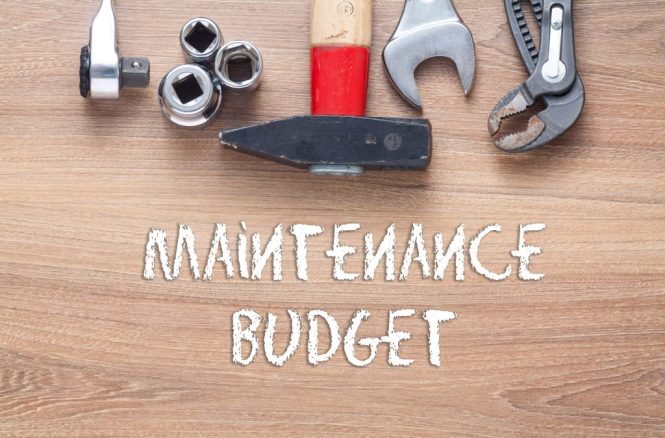

Ignoring routine vehicle upkeep is costing your business money—and you might not even realize it! A well-maintained vehicle translates to lower repair bills and better performance, boosting efficiency and saving your company money. This article dives deep into the importance of proper vehicle maintenance and outlines the hidden costs of neglecting routine upkeep, equipping you with actionable strategies to avoid costly surprises. We will cover the financial impact, discuss practical steps to implement a comprehensive maintenance program, and showcase real-world examples of how proactive maintenance saves businesses money. This comprehensive guide will walk you through the crucial elements of vehicle upkeep, from scheduling regular maintenance to identifying potential problems early.
The Financial Impact of Neglecting Routine Vehicle Upkeep
Unforeseen Repair Bills
Neglecting routine vehicle maintenance often leads to unexpected and significant repair bills. Routine checks, such as oil changes, tire rotations, and brake inspections, may seem insignificant at first glance. However, delaying these tasks can result in more serious and expensive problems down the line. A simple oil leak could potentially damage other components or lead to engine failure if not addressed promptly. This ultimately leads to higher repair costs in the long run.
Reduced Vehicle Lifespan
Regular upkeep not only keeps your vehicles running efficiently but also extends their lifespan. By adhering to manufacturer recommendations for maintenance schedules, you significantly reduce the risk of premature wear and tear. Neglecting routine upkeep compromises the vehicle’s structural integrity and potentially leads to costly repairs, replacement, and in some cases, premature scrapping of the vehicle.
Implementing a Comprehensive Vehicle Maintenance Program
Establish a Clear Maintenance Schedule
A systematic maintenance schedule is essential for proactively addressing potential issues. This schedule should outline specific tasks, required parts, and the frequency of each check-up. This helps ensure that all components are properly maintained, preventing major breakdowns or costly replacements. For instance, if your vehicle is used for commercial purposes, a more rigorous maintenance schedule will be necessary.
Utilize Technology and Data Analytics
Leverage technology to streamline your vehicle maintenance process. Many maintenance software tools can help you schedule appointments, track service history, manage invoices, and predict potential issues. This data helps anticipate maintenance needs, schedule routine checks, and avoid costly breakdowns.
Identifying and Addressing Potential Issues Early
Regular Inspections
Conduct regular inspections to catch potential problems early. This includes visually inspecting the vehicle for any signs of wear and tear, such as leaks, damage, or unusual noises. By identifying these issues proactively, you can address them before they escalate into more significant and expensive repairs.
Diagnostic Tools
Utilize diagnostic tools to identify potential issues early. These tools can provide valuable information about the vehicle’s performance and highlight potential problems that may not be immediately apparent. Professional diagnostic tools can detect subtle issues before they lead to major problems, saving significant money on potential repairs.
Case Studies: How Proactive Maintenance Saves Businesses Money
Case Study 1: A Trucking Company
A trucking company that implemented a proactive maintenance schedule saw a 30% reduction in unexpected repair costs within six months. The company found that by adhering to the maintenance schedule, they were able to anticipate and address potential issues early, preventing major breakdowns, and keeping their fleet on the road. This strategy not only saved the company money but also improved their operating efficiency.
Case Study 2: A Delivery Service
A delivery service that prioritized routine vehicle maintenance reported a 15% improvement in fuel efficiency. By optimizing their maintenance schedule, the service company was able to identify potential leaks or issues with the fuel system, allowing them to address the problems early and maintain optimal fuel economy.
Data from industry reports supports the claim that proactive maintenance leads to significant cost savings for businesses with large fleets of vehicles.
Maximizing Vehicle Lifespan and Safety
Preventive Maintenance
Proactive maintenance not only protects your financial investment but also improves the overall lifespan of your vehicles. By conducting regular upkeep, you help prevent premature wear and tear, extend the period between major repairs, and keep your vehicles in top working condition.
Safety Measures
Proper vehicle maintenance is crucial for maintaining safe operation. Regular checks ensure that braking systems, lighting, and other safety features are in good working order, reducing the risk of accidents and maintaining a strong safety record.
Integrating Vehicle Maintenance into Company Culture
Training and Education
Train your employees on the importance of proper vehicle maintenance and the procedures for conducting routine checks. Involving employees in the maintenance process empowers them to notice potential issues and report them promptly. A skilled workforce helps ensure the longevity of your vehicles.
Communication and Accountability
Establish clear communication channels and assign responsibility for vehicle upkeep tasks. Regular updates and feedback can ensure that all stakeholders are aware of the importance of vehicle maintenance. Regular reports can help your team identify if there is an issue with routine upkeep. The goal is to identify and correct any discrepancies quickly.
The Bottom Line: Why Preventative Vehicle Maintenance Is Key
Avoiding Costly Breakdowns
Preventative maintenance reduces the risk of costly breakdowns and unscheduled repairs. By regularly inspecting, servicing, and replacing parts, you proactively address potential issues, ultimately minimizing the likelihood of major breakdowns or significant financial losses.
Long-Term Savings
Reduced Repair Bills
By prioritizing preventative maintenance, you can significantly reduce the cost of vehicle repairs in the long run. This proactive approach helps mitigate expensive breakdowns and keep your vehicles running smoothly, ultimately leading to significant cost savings over time.
The Importance of Driver Training and Awareness
Driver Education
Proper driver education and training play a vital role in maintaining the lifespan and safety of your fleet. Educating your drivers about proper vehicle handling techniques, fuel efficiency strategies, and the importance of reporting any potential issues can significantly reduce wear and tear. A well-trained workforce proactively helps to identify and report potential problems.
Driver Responsibility
Empowering drivers with the necessary knowledge and encouraging them to report issues promptly is crucial for preventative maintenance. Drivers should be responsible for routine inspections and documenting any potential problems. This proactive approach will reduce the number of costly repairs, leading to a positive impact on your company’s bottom line. It’s a win-win for everyone involved in the vehicle operation and maintenance process! For example, a driver noticing a slight oil leak will report it to the supervisor before it becomes a major concern or a costly expense.
In conclusion, ignoring routine vehicle upkeep can significantly impact your business’s bottom line. Preventive maintenance is key to avoiding costly repairs down the road. By prioritizing routine vehicle maintenance, you can save money on unexpected expenses, improve vehicle lifespan, enhance safety, and maintain a professional image. Schedule a maintenance check-up today, and take control of your vehicle maintenance budget! Contact us for a free consultation about your vehicle maintenance strategies.